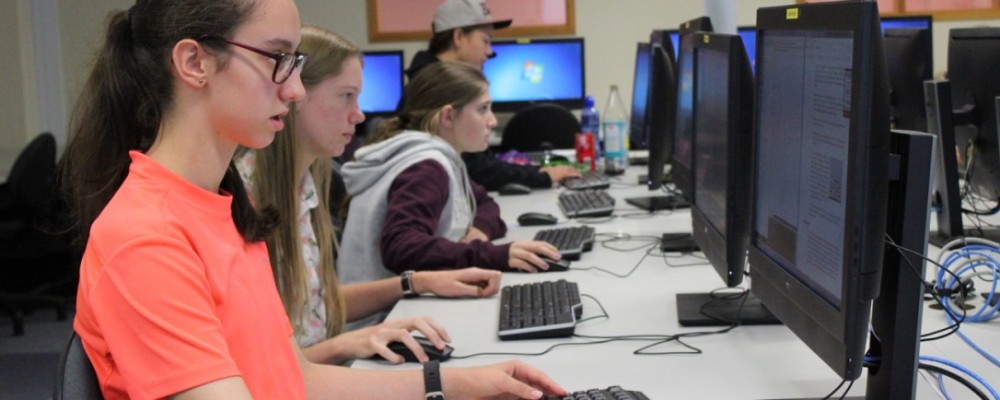
Why So Few Women Are Studying Computer Science
University students around the country are packing up their cars and making the annual pilgrimage to dorm rooms or sparsely-decorated apartments to kick off the school year. They’re pounding the concrete in Ikea for last-minute bathroom accessories, and hugging their parents goodbye until fall break.
The university experience prepares young adults for future careers. It teaches them required skills, and introduces them to peers who may one day become coworkers.
For one field in particular, the classes, and for now, the future, look similar to the fraternity houses that line a college town’s streets. Computer science is a boys club.
Women earn just 18% of undergraduate degrees awarded for computer science. At top research universities, that number is 14%, according to the Anita Borg Institute.
What is most startling about that number is that it does not represent progress. In 1985, women earned 37% of computer-science undergraduate degrees.
Three decades later, computer science has become a much more vital gateway to high-paying jobs and the chance to influence the software-driven future of society. Yet vastly more men than women are stepping through it.
Why Is There A Gender Gap?
Computer science is the only field in science, engineering and mathematics in which the number of women receiving bachelors degrees has decreased since 2002—even after it showed a modest increase in recent years.
“The number of female degree earners in the last three years is starting to inch up, but it’s rising faster for men,” Linda Sax, an education professor at UCLA who is researching why women are underrepresented in computer science. “The numbers of students who go into computer science has fluctuated relative to perceived career opportunities, but that the gender gap tends to widen during periods of expansion.”
That’s because when computer science is viewed as a lucrative career—as it is now—more people, both men and women, choose to pursue it. In those years, though, the ratio of men to women increases.1
One reason for this is because women have historically chosen lower-paying yet fulfilling jobs like teaching or journalism, whereas their male counterparts, sometimes considered family providers, choose high-paying careers like computer science and engineering.
The advent of the home personal computer may have contributed to the historic gender gap. In the 1980s, when the PC became a standard home appliance, it was mostly men who used it. According to the National Science Foundation, a 1985 study found that men “were substantially more likely to use a computer and to use it for more hours than women; 55% of adult women reported not using the computer at all in a typical week, compared to 27% of men.”
It was a man’s machine—despite Apple’s attempts to brand one as a “homemaker appliance,” for women who run both the business and the household.
Other contributing factors, according to academic experts I interviewed, include a culture that encourages young women to play with dolls rather than robots and pursue traditionally female careers, as well as the self-perpetuating stereotype that a programmer is a white male. Sometimes women can feel like they don’t belong in a technical world dominated by men.
Those stereotypes are based on reality, according to data released by some of the largest tech companies. Among the top employers in Silicon Valley, including Facebook, Google, Twitter and Apple, 70% of the workforce is male. In technical roles, the disparity is even greater. At Twitter, for instance, only 10% of the technical workforce is female.
Telle Whitney, president and CEO of the Anita Borg Institute, is working to change those numbers. The organization, founded in 1987 by computer scientist Anita Borg, aims to equalize the ratio of men and women in technology fields.
Whitney herself knows firsthand how challenging it can be as a woman pursuing a degree in computer science.
“I did my PhD at Caltech, and at the time when I was there, it was about 14% women,” Whitney told me in an interview. “I didn’t know quite what was going on, but the feeling of isolation, like ‘I don’t necessarily belong,’ was pretty prevalent.”